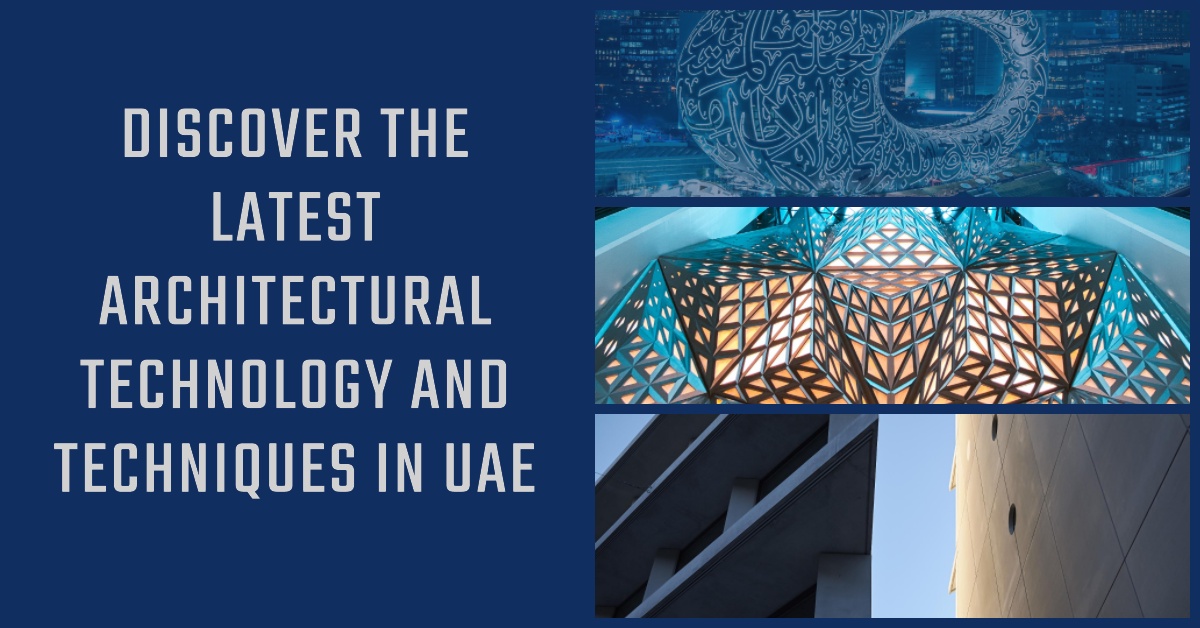Architecture design and technology have gone through a complete transition during the past decade, specifically after the emergence of new technologies like AI and VR.
Fast forward to the 21st century, and we see iconic skyscrapers making statements in the UAE. People are using cutting-edge architectural methods and technologies along with conventional components in modern-day buildings in the country.
Latest architectural advancements provide us with sustainable technologies, smoother processes and interactive spatial design experiences like immersive visualization.
The Architectural Techniques and Technologies Used in The Latest Projects in The UAE
Sustainable Design:
The United Arab Emirates has been increasingly using green building technologies. It involves using sustainable materials, renewable power sources, such as solar technology and advanced air conditioners to combat the scorching summers.
BEEAH group’s new headquarters in Sharjah is a project that redefines sustainable design and development. It is a carbon-neutral building powered by a wide photovoltaic field which makes it an energy self-sufficient building for the whole year. The building’s constructors have used materials in the structure sourced primarily from recycled materials.
Parametric Design:
Architects have been using multiple free-form and organic building designs in the last 20 years. These design styles are called parametric buildings developed through the parametric design process.
It includes utilizing algorithms to develop dynamic and sophisticated architectural forms. It helps form delicate structures and facades that align with particular contextual and environmental factors.
3D Printing:
The Emirates has focused on 3D printing techniques for building residential and commercial units. Examples include a 3D-printed mosque in Dubai, the Dubai Future Foundation building, a 3D 3D-printed villa in Sharjah, and a 3D 3D-printed bus stop in Ajman, Dubai Municipality building.
3D printing helps swiftly develop construction elements employing materials such as concrete, which may lessen construction expenses and time.
Smart Buildings:
The UAE is famous for its future-oriented developments, and smart building practices are a facet of this trend. This technology integrates sophisticated automation, data analytics and IoT (Internet of Things) detectors to maximize electricity saving and improve resident comfort.
Legendary Skyscrapers:
The country is known for its incredible skyline, and noteworthy high-rise buildings are still a big priority. Burj Al Arab and Burj Khalifa have set the bar for avant-garde engineering and architecture.
Mixed-Use Projects:
Various developments in the UAE incorporate commercial, residential and recreational areas into single property developments. These mixed-use buildings generally boast creative designs and use space efficiently.
Cultural Integration:
Property developers and architects are increasingly focusing on mixing classic architectural components with contemporary designs, thanks to the country’s rich cultural heritage. It fosters a distinct sense of place that aligns with the UAE’s culture.
Materials Innovation:
There is a growing focus on using the latest materials, like self-healing concrete, for decreased maintenance and higher longevity.
Biophilic Design:
It emphasizes incorporating natural elements and nature into property developments. It may involve things such as flowing water elements, indoor lawns and sunlight.
Architectural and interior design companies in the Emirates use innovative technologies and futuristic practices to create extraordinary buildings with modern features. Fajr Interiors is one such agency helping develop unique and innovative projects in the country. It is leveraging sustainable and green building techniques such as using power-efficient materials, cutting-edge cooling systems and renewable energy sources.
Also Read:
Top 6 Technologies To Build Microservice Architecture


No comments yet